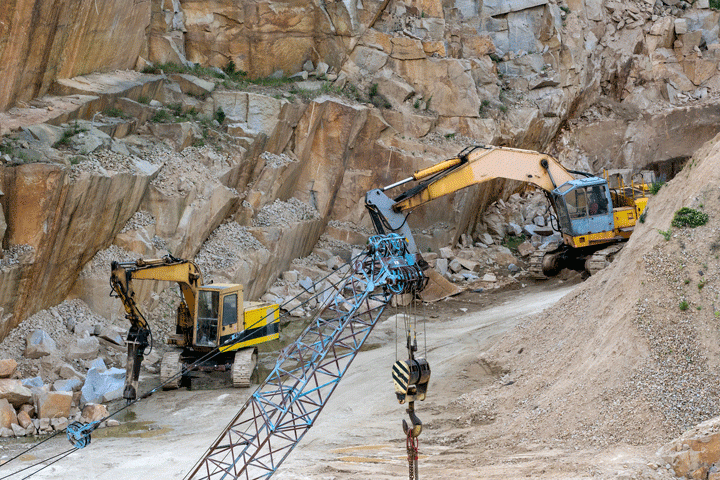A Trip Through Granite Quarries in South Africa: Introduction Nature's Virtuosity
A Trip Through Granite Quarries in South Africa: Introduction Nature's Virtuosity
Blog Article
Unearthing the Rich Background and Lasting Practices of Granite Quarrying
As we base on the precipice of revealing the complex tapestry of granite quarrying, a trip via time reveals not just the physical act of removing rock however also the cultural and historic relevance woven right into the really textile of this method. From the ancient origins that laid the foundation for modern-day quarrying techniques to the sustainable methods that are shaping the future of this market, each carve mark on granite surfaces tells a story waiting to be discovered (granite quarries in south africa). The legacy of granite quarrying stretches far beyond mere extraction; it is a testament to human resourcefulness, resilience, and the enduring appeal of this marvelous stone
Old Origins of Granite Quarrying
Dating back to ancient worlds, the practice of quarrying granite has actually been an integral part of human history and building advancement. The earliest evidence of granite quarrying dates back to ancient Egypt, where large pyramids and detailed sculptures were crafted from this sturdy rock. The Egyptians used primitive tools to draw out granite blocks from quarries, showcasing the value of this material in their monumental building and constructions.
Moving on in history, the Greeks likewise made significant contributions to the quarrying of granite. The Greeks made use of granite in numerous building marvels, such as holy places and statues, demonstrating their skill in shaping and sculpting this hardy stone. The Romans better fine-tuned the strategies of quarrying granite, using advanced devices like blades and hammers to essence and form granite for their iconic structures.
Through the centuries, the practice of quarrying granite has advanced, with contemporary innovations boosting performance while preserving the ageless charm of this natural stone - granite quarries in south africa. From ancient human beings to modern builders, the tradition of granite quarrying remains to form our globe
Advancement of Quarrying Techniques
The advancement of quarrying strategies has been noted by a continual development in the direction of higher performance and precision in drawing out granite. From the basic approaches employed by our ancestors to the innovative modern technologies made use of in modern quarrying operations, the sector has undergone substantial innovations. Early quarrying methods entailed hand-operated labor with fundamental devices such as knives, hammers, and wedges to draw out granite blocks from the earth. As worlds proceeded, strategies like fire-setting and primitive nitroglycerins were introduced to facilitate the extraction process.
Developments in computer-controlled tools and 3D modeling have actually enhanced quarrying operations, leading to minimal environmental impact and enhanced sustainability methods. As the demand for granite proceeds to climb, the evolution of quarrying techniques stays important to meeting market needs successfully and sustainably.
Cultural Value of Granite
Granite holds an extensive cultural importance throughout different people due to its long-lasting presence in building masterpieces and revered monoliths. From the majestic pyramids of Egypt to the intricate makings of the Angkor Wat holy place in Cambodia, granite has been a product of selection for revealing grandeur and longevity in social heritage. In old Rome, granite columns embellished holy places and public structures, symbolizing toughness and durability. The social value of granite prolongs past its physical features; it personifies strength, stability, and timelessness, making it an icon of sustaining heritages and practices.

Lasting Practices in Quarrying
In the middle of the abundant history of granite quarrying and its social importance exists a growing emphasis on lasting methods within the sector. As ecological recognition and issues concerning resource deficiency have heightened around the world, the quarrying field has Full Report significantly accepted sustainable approaches to helpful site reduce its impact on the atmosphere and surrounding neighborhoods.

Moreover, recovery and recovery of quarry sites post-extraction are important to sustainable techniques. By bring back quarried areas to a natural or beneficial state, such as creating wild animals habitats or recreational rooms, quarriers can counter the environmental footprint of their operations and add positively to the regional environment.
Tradition of Granite Quarrying
With a historical backdrop soaked in workmanship and industrial progression, what withstanding effect has granite quarrying left on the landscape of modern society? The legacy of granite quarrying goes beyond mere removal techniques; it has formed building wonders, urban landscapes, and social heritage worldwide. The long lasting nature of granite has made it a favored option for monoliths, buildings, and infrastructure, standing as a testimony to the ability and artistry of quarry employees throughout generations.
Additionally, the financial footprint of granite quarrying can not be ignored. The sector remains to provide work possibilities and granite quarries in south africa drive neighborhood economic climates in regions where granite removal is widespread. It has also stimulated technical innovations in quarrying techniques and tools, leading to much more efficient and lasting methods.
In terms of sustainability, the legacy of granite quarrying consists of initiatives to reduce environmental effects with recovery tasks and accountable resource monitoring. By stabilizing economic interests with environmental stewardship, the market makes every effort to ensure that future generations can continue to take advantage of this long-lasting natural deposit.
Conclusion

Report this page